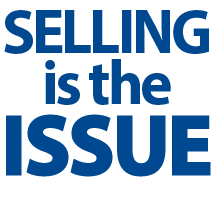Flashback to February 1996 – The Software Market: Selling is the issue

Web-watchers talk about selling software on-line, often opening with the comment “Security is a big problem with doing business on the Web, because clients are not comfortable with sending a payment on-line.” For software marketers, the biggest problems are the human persuasion problems – the seller needs a chance to interact with the buyer. In many markets, this is essential to completing the sale.
So getting payment is not the main issue, selling is the issue of importance to technology suppliers.
Comments from the highway
At Corel, SGML Development Manager Chris Biber made some interesting observations: “The Internet will not replace all other channels, for example:
- Systems Integrators – some applications are complicated, and must be tailored to the client situation; clients want the “whole solution” installed.
- Consumer Products – clients want to make visual comparisons, talk to real people, get answers to questions.
- The Corporate buy – still requires face to-face contact due to complexity of ongoing relationships: technical, business, and personal.”
Selling is the issue
Chris was also very aware of selling dynamics, adding “There are a few important client behavior issues to think about:
- Building traffic – Vendors ask ‘How do I get the target audience to visit my Web site’ – right now you need to use both traditional and electronic marketing tools, and set them up to reinforce each other.
- The “Impulse Buy” – It is usually triggered by a combination of conditions; low price, intriguing product, packaging, a compelling reason to buy. Impulse buys are rare on the Web, so if commodities are only sold electronically, a lot of money will be left on the table – there is no direct equivalent to the allure of an in-store special.
- Vertical niche markets – Gathering customer demographics is ongoing, so traditional marketing techniques may be necessary to supplement the electronic marketing activities. Also professional associations are important – you should join the electronic chapter, put a hot link on their Web page, and join discussion groups.
- ‘Commodities’ – Some interesting new possibilities are emerging. First, products can evolve faster to become commodities. Suppliers can start with a ‘test balloon’ by down-loading a basic product, then learn about the market, the new paradigm, and what marketing techniques work.”
What can we learn?
Selling technology is part of a 6-step learning process. This is based on human reactions which won’t change for the next million years. Does the Internet fully serve this process? Here are my comments:
1. Awareness …. Yes, the electronic market gives you that, but only to those who are looking for something in your category, and only if they find your Web page. Advertising on other Web pages, with a hot link, will help them find you. Try to have as many meaningful links as possible, and/or a site so attractive it is a ‘must see.’
2. Knowledge…. Great! You can put your one-pager, two-pager, and even the product documentation on line. Special situation techniques should be tried – for example the COGNOS move to expand mindshare among businessmen sports fans. For the World Series and the Superbowl public access to sport statistics was provided and promoted. A shareware version of PowerPlay was made available as a freebie with the database.
3. Liking…. Yep, how about customer references, positive product evaluations, and application guidance on-line. Also, one interesting thing which happens is the placement of ‘planted questions’ in the discussion groups. You have one friend ask a question, and another answer it with a seemingly independent reference to your solution (and even your Web page!). Will people detect this? Will they flame you for it? Is it good news or bad news? Time will tell.
4. Preference … Hmmm… not so strong… lots of competition out there… how do you do “Objection-handling” on the Internet? We will probably see only commodity products sold this way, or narrow niche products with strong computer literacy already part of the audience profile.
5. Commitment – Not a solid tool for getting clients to commit. We need to have closing skills in front of the client for most non-commodity products at middle or higher price points.
6. Buy – Oops! Here the obvious problem seems technical (i.e. can we receive the payment?) This one will eventually be solved. But the sales manager in us keeps asking: Do we get as much revenue as possible? Maybe not; the impulse buy may not happen, or may happen much less.
This article by Peter Fillmore, was originally published in MARKETECH in February 1996.



Follow Us
Follow us on LinkedIn for updates.